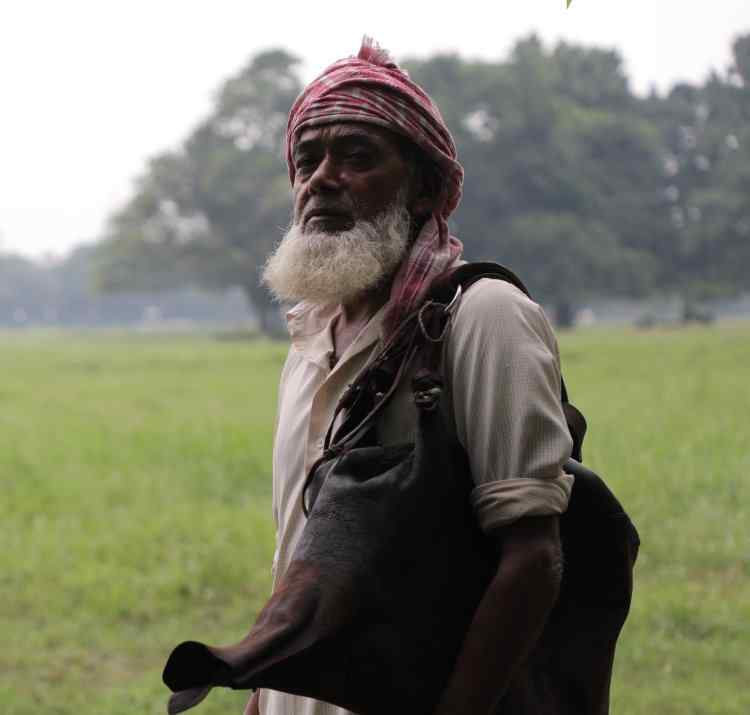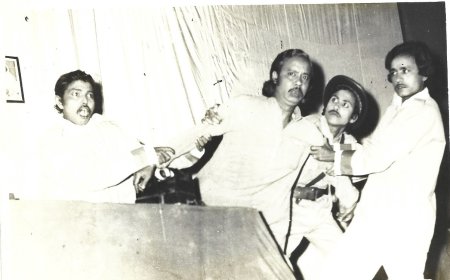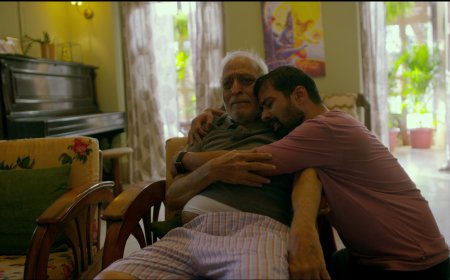Ripples Under the Skin: A sincere illustration of a fading tribe.
Dipankar Sarkar reviews the short documentary, 'Ripples Under the Skin' by Farha Khatun.

Dipankar Sarkar, noted Indian film critic and an alumnus of FTII, Pune, writes, “The uniqueness of the topic of this documentary comes from Farha’s interest in showcasing the plight of the marginalised and excluded.”
National Award-winning filmmaker Farha Khatun’s documentary Ripples Under The Skin is a rare account of a community struggling to make a livelihood from a nearly vanishing profession while also battling with a city that both values and ignores their occupation. It is also an ode to the city of joy, which, like any metropolitan area, accepts the arrival of migrants with open arms and allows them to thrive and prosper in their professional and personal lives. But with the cruel passage of time, if these individuals do not adapt themselves to the Darwinian theory of survival, they are doomed to suffer.
The protagonist of the documentary is a 65-year-old migrant from Bihar’s Katihar district, Sheikh Nazim. He has been working as a bhists for almost two decades, and his job is to supply water from a leather sack (mashaqs), strapped over his shoulder, to shops, houses and whoever else requires the service. He got this job from another guy by paying five thousand rupees and getting his position approved by the high court. He is paid a very paltry sum for his arduous task. Ten rupees for lower floors and up to thirty rupees for upper floors He would consider himself fortunate if he could deliver thirty to forty mashaqs every day. But with the onset of age, his zeal to work does not comply with his health. He gets palpitations after delivering a maximum of ten times. Now, the city is equipped with water pipelines and the requirements of bhists are declining drastically.
The uniqueness of the topic comes from Farha’s interest in showcasing the plight of the marginalized and the excluded in a society that has overlooked the rigours of a depleting community of workers. It is an unpretentious depiction of a community that is on the verge of extinction and if their struggle for existence is not archived, it is bound to be erased from the collective memory. But the nature of the profession is so unprosperous that its survival is doubtful. Even Nazim acknowledges the same and does not want his grandson to follow in his footsteps. His daughter has reached a marriageable age and the prospective groom is demanding an amount of two lakh rupees. So, under such circumstances, he is left with one option, which is to continue with what he has been doing.
The filmmaker, along with his cameraman, Kumar Tapas Ranjan, captures Nazim while he is working in a manner to underline his confinement, a kind of state from which he could not steer clear of his position. The voice-over narration by Monalisa Mukherji, revealing the historicity as well as the importance of Nazim’s profession, brings a harmonic pace to the documentary. The sound design by Sabyasachi Pal enriches the aural space with an appropriate synthesis of sound and silence. The editing by Farha has a fluent style that effectively captures the reality of a dying profession.
It is hard to deny how the documentary exhibits the genuine concerns of the filmmaker towards the subject. But a running time of twenty-nine minutes proves to be a deterrent to letting the viewers get familiarized with the protagonist on a personal level. We empathize with the plight of the protagonist, but somehow we do not form a genuine connection with him. Despite being moving, one is left informed but unfulfilled by this documentary made with support from the Films Division.
***
What's Your Reaction?



































































